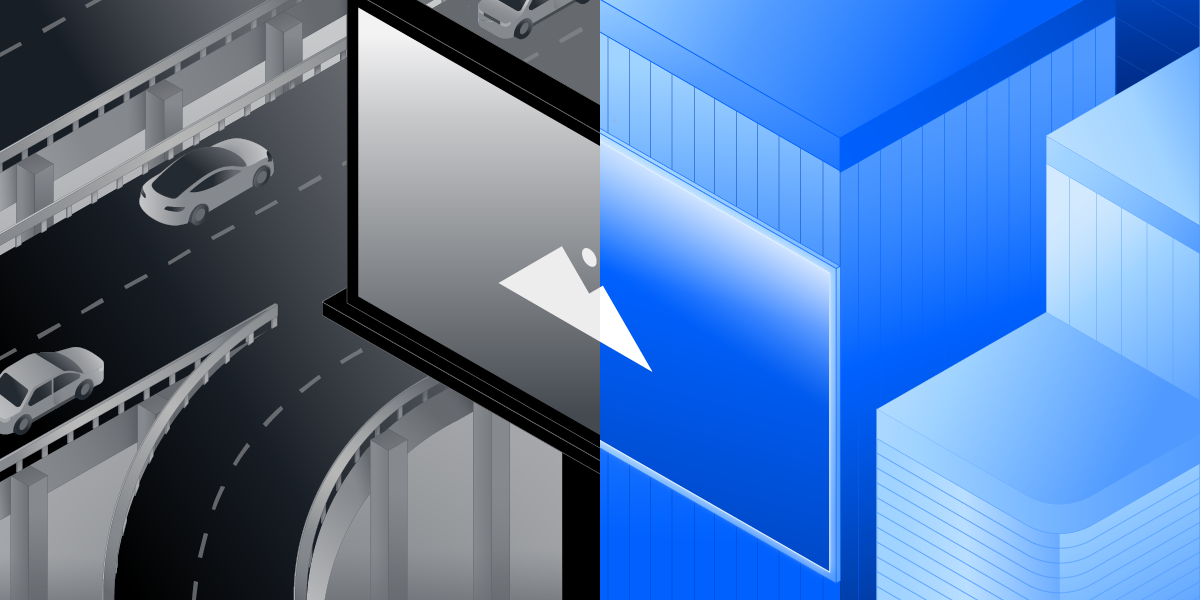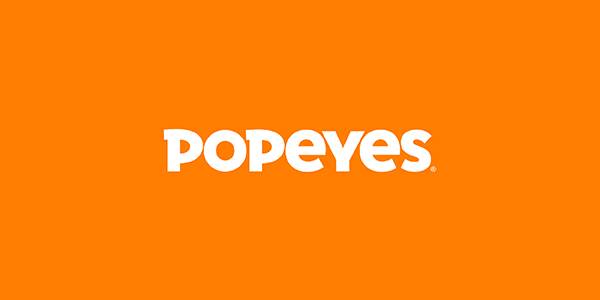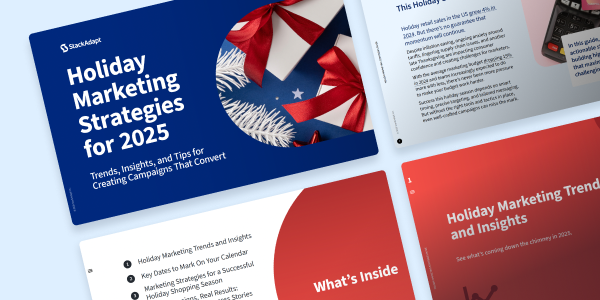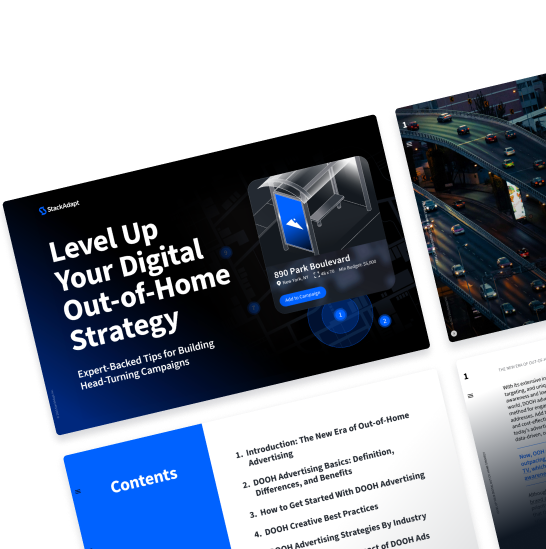DOOH and OOH: Advantages and Disadvantages for Advertisers

Out-of-home (OOH) advertising is the last high-attention reach channel you can buy programmatically, and it now measures like digital.
Once known for static billboards and posters, out-of-home (OOH) advertising has evolved into a dynamic, data-driven medium that commands attention in ways few digital channels can match.
The rise of digital out-of-home (DOOH) has redefined what’s possible, bridging physical presence with digital precision. The proof is in the performance:
- The DOOH market is projected to surpass $25 billion USD by 2030, growing over 7% annually.
- Studies show large-format DOOH captures about 5× more attention than standard online formats.
- DOOH now accounts for 36.3% of total OOH revenues, up 9.4% year over year.
For marketers competing in the attention economy, that makes OOH a uniquely strategic asset.
In this article, we’ll examine the advantages and disadvantages of OOH advertising, explore how DOOH is transforming the medium, and show how StackAdapt makes it as measurable, adaptable, and performance-driven as any digital channel.
OOH Advertising
OOH advertising refers to marketing messages placed in public spaces designed to reach people as they move through the world. These ads offer high visibility in high-traffic areas, making them a proven way of boosting brand awareness.
Traditional OOH formats include static billboards, transit posters, and street furniture displays, which are valued for their scale and permanence. In contrast, DOOH leverages digital screens that can adapt creative messages based on weather conditions, time of day, or audience movement.
Today, programmatic DOOH combines this physical presence with the flexibility of digital advertising. Brands can buy and optimize DOOH ad placements in real time, target specific demographics, and measure performance across channels.
Types of OOH Advertising
OOH advertising takes many forms, ranging from static displays that have defined the medium for decades to dynamic, data-driven DOOH experiences.
Each format offers unique advantages for reaching your target audience in public spaces and high-traffic areas, depending on your overall marketing strategy and campaign objectives.
| Format | Strategic Use |
| Billboards | Provide high visibility and sustained brand presence, ideal for boosting brand awareness. |
| Transit Advertising | Reaches commuters and travellers in motion, aligning with geographic and behavioural targeting. This can be physical or digital. |
| Street Furniture | Offers repeated exposure in local communities and dense urban settings. |
| Digital Billboards & Screens | Allows updating messaging in real time, adapting to weather conditions, time, or audience movement. |
| Place-Based Media | Enables contextual, moment-based engagement with specific demographics. |
| Programmatic DOOH | Offers flexibility, targeting precision, and measurable performance across channels. |
Advantages of Out-of-Home Advertising
Modern OOH advertising offers business leaders a powerful way to drive awareness, engagement, and measurable growth in an increasingly fragmented media landscape. Here are some of the advantages of OOH advertising.
High Visibility and Reach
OOH placements offer unskippable, always-on visibility in high-traffic areas where audiences are most attentive—commuting, shopping, or travelling. This makes OOH uniquely effective for boosting brand awareness and reinforcing message frequency across large, diverse populations.
DOOH amplifies this advantage with digital screens that deliver motion, light, and context-based messaging, capturing attention far beyond what’s possible with static creative.
Targeting and Contextual Relevance
With advancements in audience data and programmatic DOOH, advertisers can now plan and activate campaigns with geographic precision, reaching specific demographics in defined public spaces such as airports, entertainment districts, or event venues.
Messaging can be dynamically adjusted based on weather conditions, time of day, or real-world events, creating a sense of immediacy and contextual relevance that elevates engagement.
Cost-Effectiveness and Longevity
OOH advertisements deliver continuous exposure without recurring cost-per-click fees. This makes them highly cost effective for sustaining awareness and driving brand lift over time.
DOOH extends that value by enabling flexible buying and measurable performance insights, ensuring budgets are directed toward placements that truly deliver.
Creative Impact and Memorability
OOH remains one of the few media formats capable of commanding real-world attention through sheer scale and design. Large-format storytelling, combined with motion and interactivity in DOOH, creates an unmatched sensory experience.
For senior marketers accountable for growth and differentiation, DOOH’s creative potential delivers both emotional resonance and quantifiable brand impact.
Disadvantages of Out-of-Home Advertising
While OOH advertising remains a cornerstone of high-impact brand storytelling, traditional formats carry several limitations that marketing leaders must weigh when planning a modern marketing strategy.
Many of these challenges stem from the medium’s static nature, though DOOH technology is actively addressing them.
Measurement Challenges
Traditional OOH ads lack the ability to measure data on impressions and engagement, making it difficult to measure ROI or tie exposure directly to conversions.
For senior marketers accountable to performance metrics, this lack of attribution can be a pain point.
DOOH, however, changes the equation by integrating audience data, and real-time impression tracking, allowing for clearer performance visibility across the full funnel.
Creative and Messaging Limitations
Static billboards and posters offer limited flexibility once installed. They can’t adapt to audience behaviour, time of day, or weather conditions, and short exposure windows mean messages must be overly simplified.
Digital screens, in contrast, enable dynamic creative updates, allowing brands to respond to contextual triggers, and keep campaigns relevant without costly production changes.
Cost and Logistics
Traditional OOH often involves high upfront production costs, complex permitting processes, and longer lead times for installation (particularly in premium high-traffic areas).
While DOOH still requires strategic planning, programmatic activation reduces friction: campaigns can be launched and optimized in days rather than weeks, offering more operational agility and efficient budget management.
Sustainability Factors
Outdoor ads are susceptible to weather damage, wear, and maintenance costs. There are also growing sustainability concerns around materials and energy use.
DOOH is evolving to address this through energy-efficient displays, automated brightness control, and recyclable infrastructure, aligning the channel with the broader sustainability goals of modern brands.
Digital OOH vs. Traditional OOH: The Modern Evolution
The evolution from traditional OOH to DOOH represents a transformation in how brands connect with audiences in public spaces. Where static billboards and posters once relied on location alone, DOOH integrates data, automation, and real-time optimization to deliver measurable, performance-driven outcomes.
Platforms like StackAdapt have redefined what’s possible in OOH by combining the reach and high visibility of traditional placements with the intelligence and accountability of digital advertising.
Each former limitation—measurement, creative rigidity, or operational inefficiency—becomes an opportunity for smarter marketing execution.
- Programmatic activation: Through programmatic DOOH, advertisers can buy, target, and optimize inventory across multiple networks through a single digital interface. This enables marketers to reach specific demographics at scale, ensuring that every impression aligns with strategic objectives.
- Performance visibility: Historically, OOH lacked the measurement rigour senior marketers expect from digital channels. DOOH now provides improved metrics, verified impressions, and audience analytics that link exposure to brand lift and business outcomes.
Real-World Example: Measuring Attention and Impact with StackAdapt
A UK brand recently leveraged StackAdapt’s DOOH capabilities to extend its omnichannel marketing strategy beyond social and search.
By activating programmatic DOOH placements across high-traffic areas and tailoring creative to weather conditions and time of day, the campaign achieved a 32% lift in brand recall and 15% higher store visitation rates compared to control regions.
What makes this case particularly notable is measurability: the advertiser was able to track real-time impressions, exposure frequency, and downstream engagement, proving that DOOH can perform with the same accountability as other digital advertising channels, while delivering unmatched, high-visibility brand experiences in public spaces.
The Attention Arbitrage: OOH in the Age of the Scroll
In today’s attention economy, where the average digital impression lasts barely 2.5 seconds, sustained audience engagement has become a rare and valuable commodity.
Amid the endless scroll of social media and digital ads, OOH advertising stands apart, commanding authentic, uninterrupted attention in real-world public spaces.
Unlike online formats that compete for clicks, OOH offers quality attention through large-scale visibility and environmental context. DOOH takes this further, delivering dynamic creative that adapts to weather conditions, time, or audience behaviour, keeping messages relevant and resonant.
With StackAdapt’s DOOH solution, marketers can now quantify that attention advantage. Real-time impression data and performance analytics make it possible to measure and maximize audience engagement, optimizing placements that drive brand recall, awareness, and ultimately, measurable business lift.
In a landscape where attention is currency, DOOH gives brands something digital alone rarely can: time well spent.
Amplify your brand with StackAdapt’s DOOH advertising solutions. Request a demo today to learn more.








